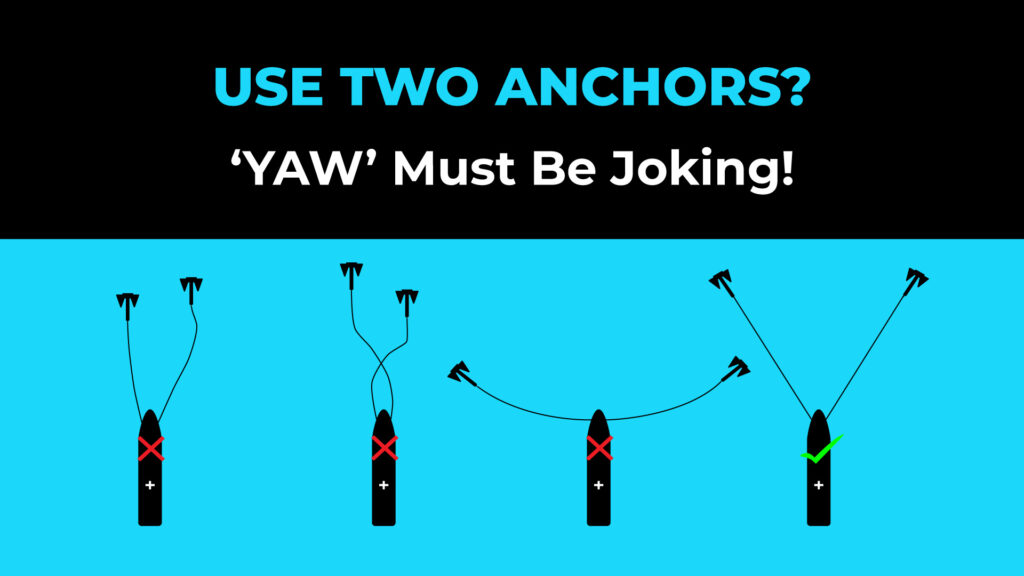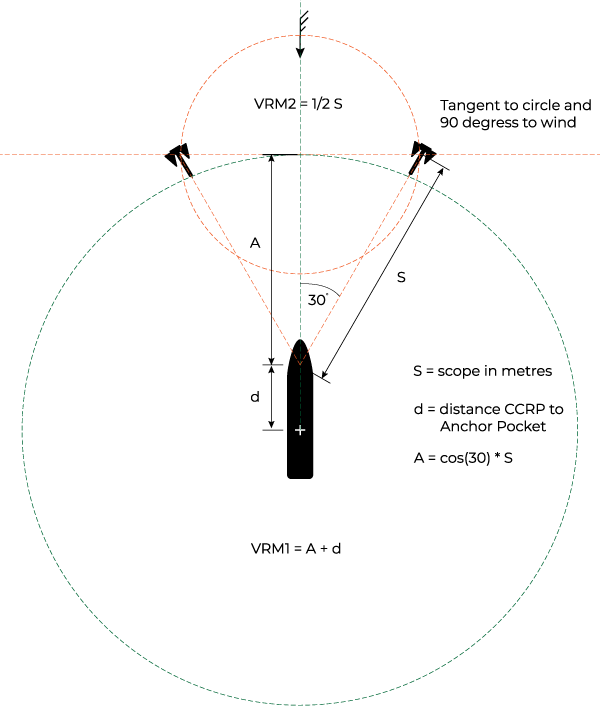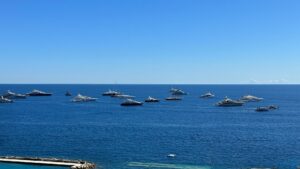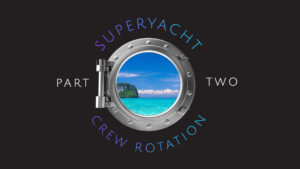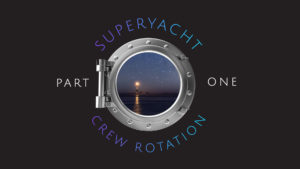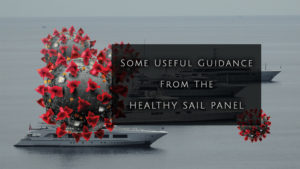[Some Captains don’t like to use two anchors and, given some of my early experiences, I can understand the reluctance and the ‘you must be joking, more trouble than they’re worth’ sentiment.
Those early experiences were not always successful and, on occasion, the chains would end up not just crossed, but knotted together – even though I was sure I had spread the anchors wide enough. I didn’t really understand why, and it felt like Aquaman and his water breathing buddies had been having a bit of a laugh seeing who could tie the most overhand knots in my chains – I’ve heard they may also operate in Porto Cervo!
However, I persevered and, when I did get it right, the benefits were obvious.
In this piece I will share what I learnt and one method I used with regular success.
Yacht Movement
When anchored in calm conditions with little wind, sea or current, you don’t need to worry much about the yachts movement, it’s inertia and how it might affect the holding.
Without external forces the yacht just sits atop the point where the chain touches the seabed. But, when wind, current, waves, interact with the yacht you get movement which, in sheltered waters, is mainly surge (longitudinal) sway (transverse) and yaw (rotational).
The manifestation of this movement is that in strong winds a yacht will ‘sail’ around its anchor; sometimes with significant changes in speed and heading. That movement and resultant inertia, combined with the wind force against yacht, places large loads on the mooring equipment, chain and anchor – enough to break the anchor out of the seabed.
Why Two?
We have all heard and felt the terrible shudder as the bow finally comes to a stop against the stretched chain at the extreme of each swing. And, stood on the bridge, bleary eyes transfixed on the ECDIS in the hope that ‘smiley face’ being traced doesn’t turn into the ‘Mark of Zoro’ – a sure sign of dragging!
I found that two anchors could significantly reduce that movement and minimise the chance of dragging. This made staying at anchor in strong winds more secure and comfortable for everyone onboard. I certainly slept better with two out!
It became my preferred choice, not just in strong winds but, also as an option when trying to keep the wind off the aft deck where guests were dinning. Preventing wind blowing away glasses and table settings certainly helps the departmental dynamic!
But How?
Along with the normal factors such as depth, scope, quality of seabed, hazards, weather, etc., there are some basic considerations that I found held true.
- Set the anchors too close and you do not make significant difference to the yachts movement, and it’s easy to cross when dropping and/or dragging.
- Set the anchors too wide and, although the movement may be dampened, their pull works against each other, reducing the holding power of your anchors.
Through trial and error, I found that the Admiralty Manual of Seamanship recommendation of forming an equilateral triangle between the bow and the two anchors worked the best. It provided sufficient spread to reduce the movement and also prevent fouling of the chains.
The method set out below is just one of a number I used. It could be described as ‘precision anchoring’ as the end result was you ended up ‘brought up’ on the spot you originally selected. It gives you a lot of confidence when you have to set two anchors in a tight or busy anchorage.
As it requires more a bit more thought and planning to get right, it’s also a great way to teach the bridge and deck teams about anchoring.
Once I have selected the area, using ECDIS and radar to ensure the area is clear, I construct my reference points on an over scaled ENC – changing the VRM units to metres also helps. As I am interested in my final position, I also need to make an adjustment for the position of the CCRP (Continuous Common Reference Point).
It’s an easy calculation as follows – you can access Trig functions on an iPhone by opening the calculator and rotating the screen.
Once you know the amount of chain (scope) you intend to use, you can calculate VRM1 and VRM2 and draw them on the ENC and set EBL1 to point directly at the true wind, and EBL2 perpendicular to wind pointing in direction of 1st anchor – as per the animation.
One word of caution; there is often the temptation to let go the 2nd anchor too early, either before the full scope is paid out, or before the chain is off the beam at a medium to long stay…resist the temptation or you will not achieve the correct spread and you may end up fouling the 1st anchors chain.
Of course, there is nothing wrong with using the bow thruster to move transversely to the 2nd anchor position but, for me, I preferred to use the wind as my thruster as it gave me a better feel of how it was affecting the yacht.
And, when the wind finally abates or shifts direction, it’s time to heave up the leeward anchor before a tangle is created – don’t delay, it’s no fun trying to take a turn out. If you’ve set them properly you can often do this using the windlass without engines or thruster.
Finally
Although I struggled initially, partly because it was something that was not taught and, I also failed to seek advice from others. When I finally got it right, the benefits were clear and as a bonus I found that the thought process involved helped improve my overall approach to anchoring.
I hope this has provided some food for thought, especially for those who have never used two anchors or, have been reluctant due to the horror stories told about fouled chains and anchors.
It is by no means the only way, but it is one that worked for me!

